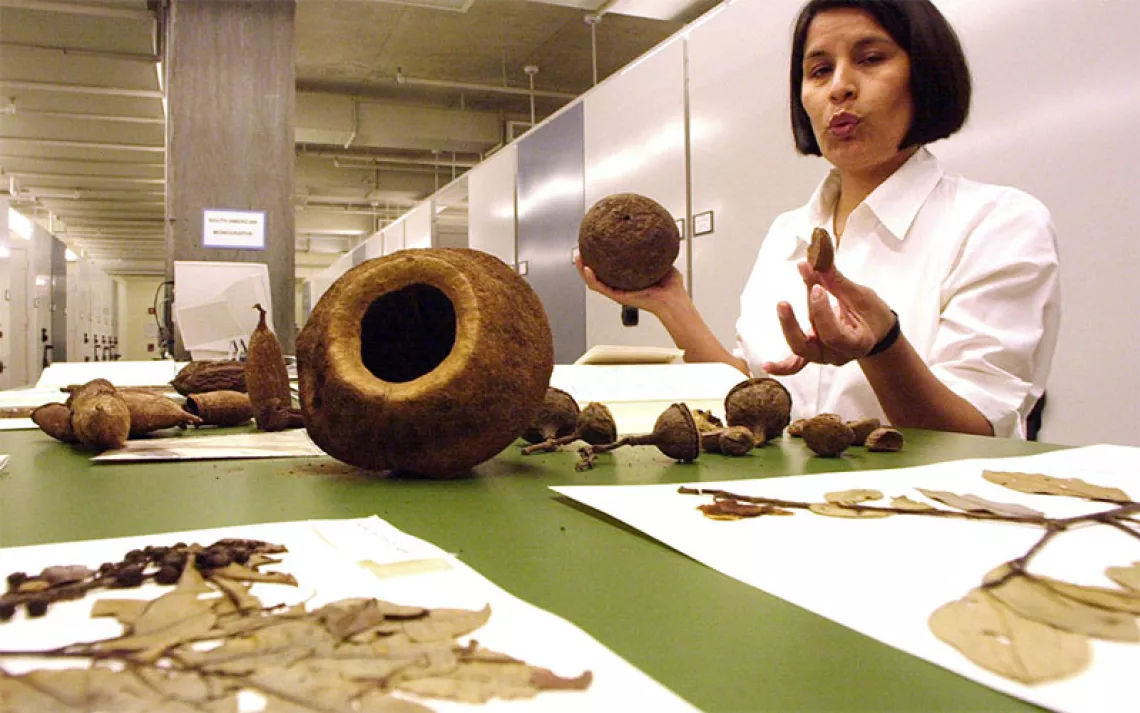Study Finds Chemicals in Yellowfin Tuna Are Widespread
The extent of contamination varies by capture location, geography

Photo courtesy of Scripps Institution of Oceanography
People are eating more seafood these days, especially in North America—adding a pound per person in 2015 alone. Upticks in fish consumption are often spurred by studies about how a diet full of fish and shellfish is typically healthier. But those recommendations skirt some thornier issues, like the sustainability of fishing and the environmental costs of fish farming. Then there is the issue of contamination. A new study looked at the persistent organic pollutants (POPs) in yellowfin tuna worldwide, and the results are not appetizing: Chemicals in tuna are widespread, according to the report.
To conduct the study, now published in Environmental Health Perspectives, marine biologist Lindsay Bonito from the Scripps Institution of Oceanography at the University of California, San Diego, gathered yellowfin samples from around the world, collecting many herself. “The way we received samples was varied. I went to Panama for a week to fish on a small panga. In Vietnam, I gathered samples from a processing plant. In Tonga, the fish came from small commercial longlining vessels. Each place was different,” she says.
But what was consistent was the fish. Bonito took the samples from the same spot on the fish—the white muscle tissue near the dorsal end—on 117 different tuna from 12 locations. Each fish was roughly 100 centimeters long and one to two years old, the most common size consumed by people. She and her team then had the samples processed at an outside lab that looked for 247 different persistent organic pollutants in the tissue.
The team analyzed the data, creating a snapshot of which and how many POPs were present in the fish. They found that some tuna caught in industrialized areas of the North Atlantic and North Pacific had 36 times more contaminants than the tuna from more pristine locations, like the West Pacific. Fish caught in the Northwest Atlantic and Gulf of Mexico in particular had large enough POP loads that they would trigger a health advisory for regular tuna eaters, pregnant women, and people with compromised immune systems.
By current standards, however, most of the fish examined in the study were safe to eat. But Sascha Nicklisch, the lead author of the study, points out that the survey only screened for 247 chemicals, while there are about 85,000 chemicals in the EPA’s chemical registry, most without data on safety levels. “We don’t want to scare anyone,” says Nicklisch. “Everyone in the lab loves fish, and we eat fish. The idea is that it’s good to know what’s in our fish. It’s important to monitor and measure these chemicals.”
One class of pollutants in particular, transporter inhibiting compounds, concerns Nicklisch. These particular chemicals interfere with cell-defense systems that prevent chemicals from bioaccumulating in the tissues of humans, tuna, and other organisms. The 10 TICs identified so far were found in all the tuna samples, and their presence may be one major reason why the fish accumulate other POPs, though more research on TICs needs to be done.
Bonito says that when it comes to saying definitively whether yellowfin from certain areas of the ocean are “cleaner” than others, it’s hard to say. “The variability was super high. You could have very clean fish and very dirty fish from the same location,” she says. “You never know what you’re going to get.”
Why the chemical load in the fish varied so much is still up for debate. “That’s the million-dollar question,” says Bonito. “The nature of these chemicals is they can persist for a long time. They can resuspend in the atmosphere, then come back into the ocean in a bioavailable form. The tuna likely get them from their food sources. The higher up the food chain you go, the higher the bioaccumulation and magnification. You likely have higher concentrations in sharks and swordfish. Tuna are somewhere in the middle.”
Nicklisch says the research highlights the need for detailed seafood labeling similar to that used in Europe, which includes the area and subarea of catch to improve consumer choices. The contamination in the fish also highlights the need for more research on chemical compounds making their way into the ocean, many of which have no safety data or advisory limits. “We should establish more guidelines for these chemicals that we produce that end up in the environment,” says Nicklisch. “It’s like knowing the ingredients in the soup you eat. You should know the effects of these chemicals.”
 The Magazine of The Sierra Club
The Magazine of The Sierra Club



